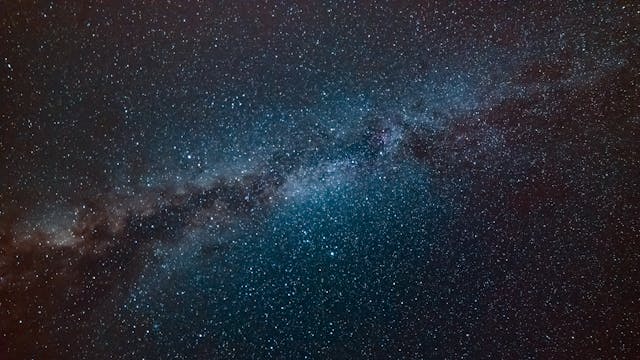Ancient Hindu astronomy and cosmology are some of the most intriguing fields within Hindu thought, dating back thousands of years. Hindu sages possessed a profound understanding of the cosmos, blending spiritual insights with remarkable scientific observations. The texts of the Vedas, Puranas, and other ancient writings reveal how early Hindu astronomers interpreted the stars, the universe’s origin, and even time cycles. This article explores the depths of ancient Hindu cosmology, focusing on celestial bodies, cosmic time cycles, and the deep symbolism associated with these cosmic principles.
The Foundations of Hindu Cosmology: The Vedas
The earliest roots of Hindu astronomy and cosmology can be found in the Vedas, dating back over 3,000 years. These sacred texts contain references to celestial bodies, seasons, and cosmic principles that formed the basis of Hindu understanding of the universe. The Rigveda, Yajurveda, Samaveda, and Atharvaveda include verses praising natural forces and celestial objects, highlighting the importance of the cosmos in ancient Hindu culture. Through these texts, ancient sages understood the interconnectedness between cosmic phenomena and earthly existence, viewing the universe as a living, breathing entity.
The Rigveda, one of the oldest Vedic texts, mentions the movements of the Sun, Moon, and stars and references the division of the year into solar and lunar months. This foundational understanding laid the groundwork for later astronomical advancements in Hindu thought, paving the way for detailed knowledge of constellations, planetary orbits, and time cycles.
Hindu Cosmology and the Structure of the Universe
Ancient Hindu cosmology presents a complex and highly symbolic understanding of the universe’s structure. According to Hindu beliefs, the cosmos is made up of multiple realms, each with its own unique attributes and spiritual significance. The universe, as per Hindu cosmology, is often divided into three main regions:
- Svarga (Heaven): A higher spiritual realm where the gods reside.
- Prithvi (Earth): The middle realm, where humans and other beings live.
- Patala (Underworld): The realm below Earth, inhabited by serpents and other mythological beings.
In addition to these realms, Hindu cosmology also describes the existence of lokas or worlds, with each loka associated with various beings, from humans to demigods to sages. These worlds are layered, stretching both vertically and horizontally, symbolizing the vast and layered nature of existence itself. This structure reflects the Hindu belief in multiple levels of reality, indicating that the physical world is only one aspect of the cosmos.
Yugas: The Cosmic Time Cycles
One of the most fascinating aspects of ancient Hindu cosmology is the concept of yugas, or cosmic time cycles. According to Hindu thought, the universe goes through four main ages, known as yugas, which collectively form a cycle. Each yuga represents a gradual decline in moral values, spirituality, and the overall quality of life.
- Satya Yuga: Known as the “Golden Age,” this yuga is a time of perfect harmony, virtue, and wisdom. People live long lives, embodying purity and righteousness.
- Treta Yuga: In this era, some decline begins, with individuals experiencing a slight decrease in virtue and lifespan compared to the previous age.
- Dvapara Yuga: The age sees further moral decline, with individuals living shorter lives and society facing more discord.
- Kali Yuga: The final and current age, marked by darkness, conflict, and ignorance. Morality is at its lowest, and the qualities of compassion and truthfulness are scarce.
After Kali Yuga, the cycle resets, starting again with Satya Yuga. This concept emphasizes the cyclical nature of time in Hindu cosmology, which stands in contrast to the linear time progression often observed in Western cosmology. The yuga cycle symbolizes not only the rise and fall of civilizations but also the continual renewal of existence itself.
Hindu Astronomy: Mapping the Cosmos
Ancient Hindu astronomers had an impressive understanding of celestial bodies and their movements. Using mathematical and observational skills, they charted the movement of stars, planets, and constellations, often with remarkable accuracy. The Jyotisha Vedanga, a text that forms part of the Vedas, contains references to astronomical phenomena and calendar systems, demonstrating the advanced knowledge Hindu scholars possessed.
One of the most significant contributions of Hindu astronomy is the concept of the nakshatras or lunar mansions. The nakshatras are 27 specific constellations along the ecliptic path, each playing an essential role in Hindu astrology. This system allowed ancient Hindu astronomers to create a lunar calendar, dividing the month into lunar days, or tithis, based on the Moon’s position relative to these nakshatras. This method of timekeeping reflects a profound understanding of the relationship between the lunar cycle and earthly events, highlighting the interconnectedness that forms the core of Hindu cosmology.
Additionally, Hindu astronomers developed a detailed understanding of planetary orbits. They studied planets’ retrograde motion, a phenomenon where a planet appears to move backward in the sky due to the Earth’s motion. This understanding was significant in establishing planetary periods and creating a predictive model of planetary positions.

The Saptarishi Constellation and the Pole Star
In Hindu astronomy, the Saptarishi constellation, corresponding to the Big Dipper, holds great significance. Named after the seven legendary sages, the Saptarishi constellation serves as a guide in the sky, representing wisdom, knowledge, and guidance. The Pole Star, known as Dhruva, is also prominent in Hindu mythology. It symbolizes constancy and resilience, guiding navigators and acting as a celestial anchor for all beings on Earth.
Dhruva is often linked with the story of a young boy who showed immense devotion to Vishnu and was rewarded with an eternal place in the heavens as the Pole Star. This story, symbolic of faith and dedication, illustrates how Hindu mythology combines cosmic phenomena with moral and spiritual teachings.
The Role of Surya Siddhanta in Hindu Astronomy
The Surya Siddhanta, an ancient Hindu text on astronomy, is one of the oldest known treatises that provides in-depth information on planetary motion, eclipses, and time calculation. Estimated to have been written around the 4th to 5th century CE, it describes astronomical measurements, trigonometric functions, and details about the Earth’s rotation and circumference. The Surya Siddhanta’s level of precision showcases the advanced mathematical and scientific understanding of ancient Hindu astronomers.
One notable achievement from the Surya Siddhanta is its calculation of the Earth’s diameter and circumference, which was remarkably close to modern measurements. This knowledge enabled Hindu astronomers to make predictions about planetary alignments, eclipses, and other celestial events with a high degree of accuracy, centuries before such knowledge was common in other parts of the world.
Symbolism and the Spiritual Connection
In Hindu cosmology, the cosmos is not merely a physical space but a manifestation of divine consciousness. The Sun, Moon, and planets are revered not only as celestial bodies but as deities with specific attributes and roles. The Sun, or Surya, is worshiped as a life-giver and symbolizes wisdom, energy, and enlightenment. The Moon, or Chandra, represents emotions, intuition, and the mind’s reflective quality.
This symbolic connection between celestial bodies and divine aspects of consciousness reflects the holistic worldview in Hindu cosmology. To the ancient Hindus, understanding the cosmos was not just a scientific endeavor but also a spiritual pursuit, with the stars and planets serving as reminders of the divine order.
Influence on Modern Astronomy and Global Legacy
The achievements of ancient Hindu astronomers have left an enduring legacy. Concepts such as zero, trigonometric functions, and sophisticated timekeeping methods influenced subsequent cultures and modern science. Hindu astronomy also formed the foundation for much of the development of later Indian astronomers, such as Aryabhata and Brahmagupta, who made further contributions that influenced global astronomy.
The continuity of Hindu cosmological principles over millennia reflects a unique understanding of time, space, and the interconnectedness of all things. Today, these ancient insights continue to inspire curiosity and reverence for the vast, mysterious universe we inhabit.
Ancient Hindu astronomy and cosmology reveal a remarkable blend of scientific understanding and spiritual wisdom. From the intricate structure of the universe to the cyclical flow of time and the symbolism of celestial bodies, Hindu cosmology offers a unique perspective that invites us to look beyond the stars and into the divine mystery that surrounds all existence. The work of Hindu astronomers laid a foundation for knowledge that resonates even today, inspiring a renewed appreciation for the universe and our place within it.



